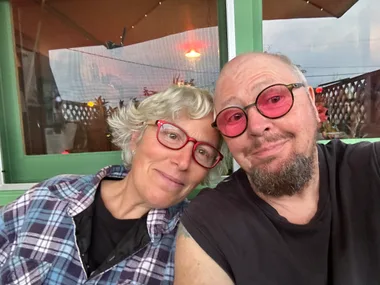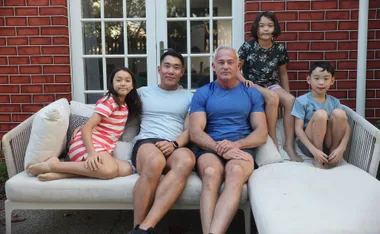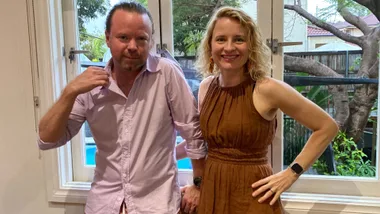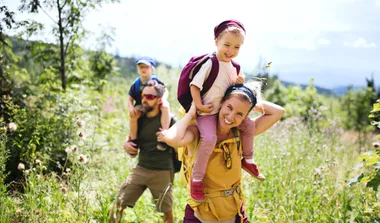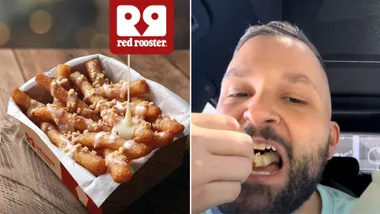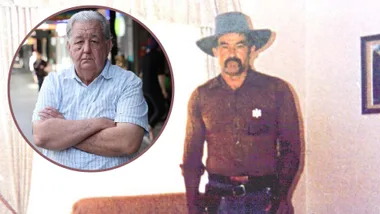Clair Weaver and Nick Cubbin visit Australian women’s prisons including Silverwater jail and discover life inside isn’t what you’d expect.
With her plaited pigtails, lean limbs and childlike earnest, Allison could be in her teens at first glance.
Come a little closer, however, and you’ll realise that she’s a lot older than that. Etched into her face are the years of abusing drugs and the beatings from violent partners (including the time her injuries were so bad she lost a baby).
There are other clues of the life she’s led: anxiety in the way her eyes dart around and a wariness of getting too involved with other inmates. There’s also an unexpected eagerness to please.
Truth is, although she says this is her last stint inside, the 43-year-old mother-of-three feels most at home within the grey concrete grounds of Silverwater Women’s Correctional Centre, a high-security prison in Sydney. It’s here that she’s found routine, stability and a measure of peace.
Step into her impeccably tidy cell and there are more clues about Allison: individual zip-locked bags of muesli – purchased with her earnings as a carer for mentally ill inmates – are lined up carefully in a box. Her single bed has been made with military precision with blankets folded on top. Nothing is out of place. Allison’s job is physically and emotionally demanding but she likes it that way: by 4pm, when inmates are locked into their cells, she’s tired.
The cousin of a famous Australian footballer, Allison has a supportive family in northern NSW. Unlike many of her fellow prisoners, she had a happy childhood. A bright and sporty little girl, she started school early aged four under the tutelage of nuns. But at 16, she quit school to become a hairdresser, went off the rails and started taking drugs.
“It wasn’t until I was 19 that I started to use heroin,” she tells The Weekly.
“I lived two very separate lives for a while. But then it started to catch up with me.”
Today she’s serving time for theft, alongside the daughters of her peers. Another generation is repeating the hopeless cycle of crime, drugs and incarceration.
“This time,” says Allison, somewhat unconvincingly, “will be my last.”
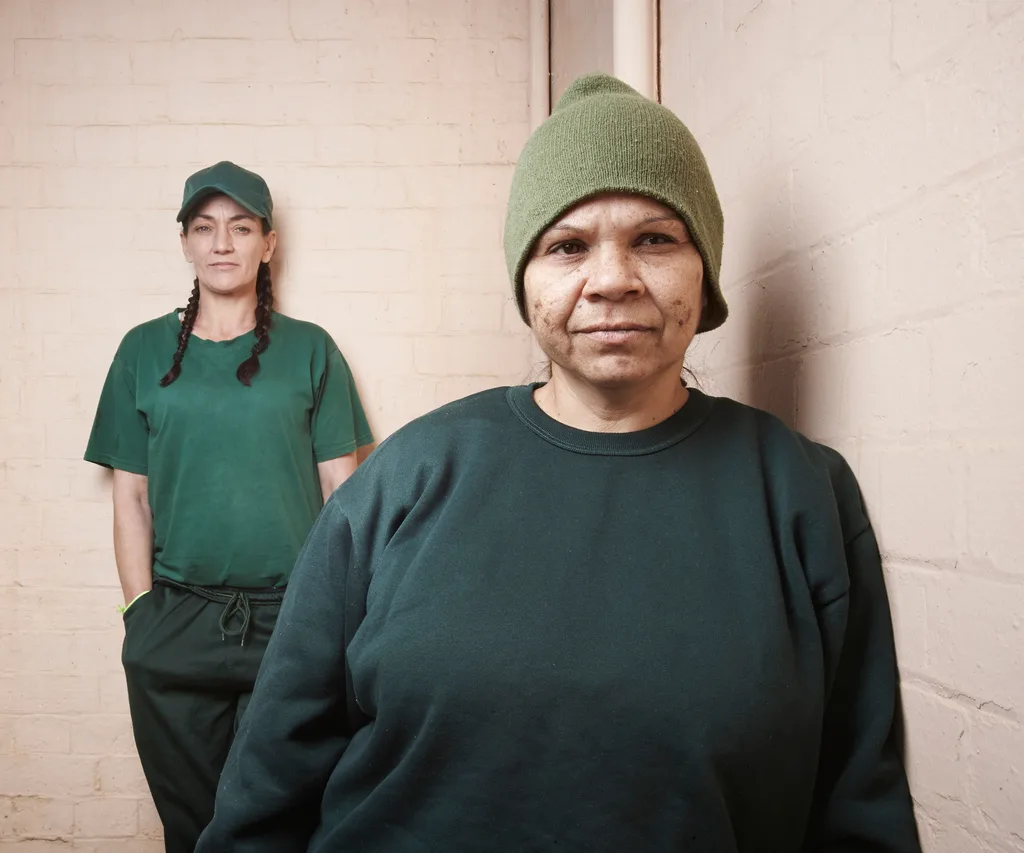
Allison (background) and Dellah (foreground), inmates at the high-security Silverwater Women’s Correctional Centre in Sydney. PHOTO: Nick Cubbin.
Across Australia, there are about 2,600 women living behind bars. While they’re dwarfed by their 31,200 male counterparts, the female prison population is increasing at a much faster rate – and has blown out in the space of a generation.
“Many years ago,” explains Patrick Aboud, the affable general manager at Silverwater Women’s who has spent 28 years working in the prison system, “it was very unusual for a woman to commit a crime at all. Nowadays there’s a lot more violence, murder and drugs.”
Have a rummage through public records and you can see the shift. In NSW, for example, women accounted for just 2.1 per cent of the prison population in 1975. Today the figure has more than tripled to 7 per cent – and it’s rising.
Look beyond numbers and you’ll realise statistics about Australian women serving time in jail make for very grim reading. A third grew up in foster care, two-thirds have been in violent relationships and more than a quarter have attempted suicide. While you can’t ignore or excuse their crimes, it’s clear they are very much victims too.
This is, in other words, one seriously disadvantaged group of women. Not that they’re too busy feeling sorry for themselves – none of the inmates The Weekly speaks with for this feature claims they shouldn’t have ended up in prison.
Today there’s a new interest in the lives of women in jail in the wake of the award-winning TV series Orange Is The New Black (aired by Netflix and on Foxtel in Australia). The US comedy drama tells the story of a woman torn away from her affluent life in New York and plunged into the gritty world of prison after being sentenced for a crime she committed 10 years previously.
From what The Weekly observes during three visits to different women’s prisons, there are obvious parallels between the TV series and the reality of life behind bars. On the positive side, there’s humour, banter and resourcefulness. Inmates appeal to guards for rules to be bent, exceptions to be allowed and compromises to be made. Indeed, there are aspects of prison life that resemble that of a girls’ boarding school, albeit a strict one.
Yet scratch the surface and you’ll find an underlying sense of frustration, guilt, helplessness and sadness from women who have reached rock bottom.
“I was shattered when my kids got taken off me,” says Erin, 29, an ex-heroin addict who is serving time for burglary at the medium-security Dillwynia prison near Windsor in NSW.
“That’s why I’m [taking part in a drug program] while I’m inside. I’ve got to prove to them I’m a changed person.”
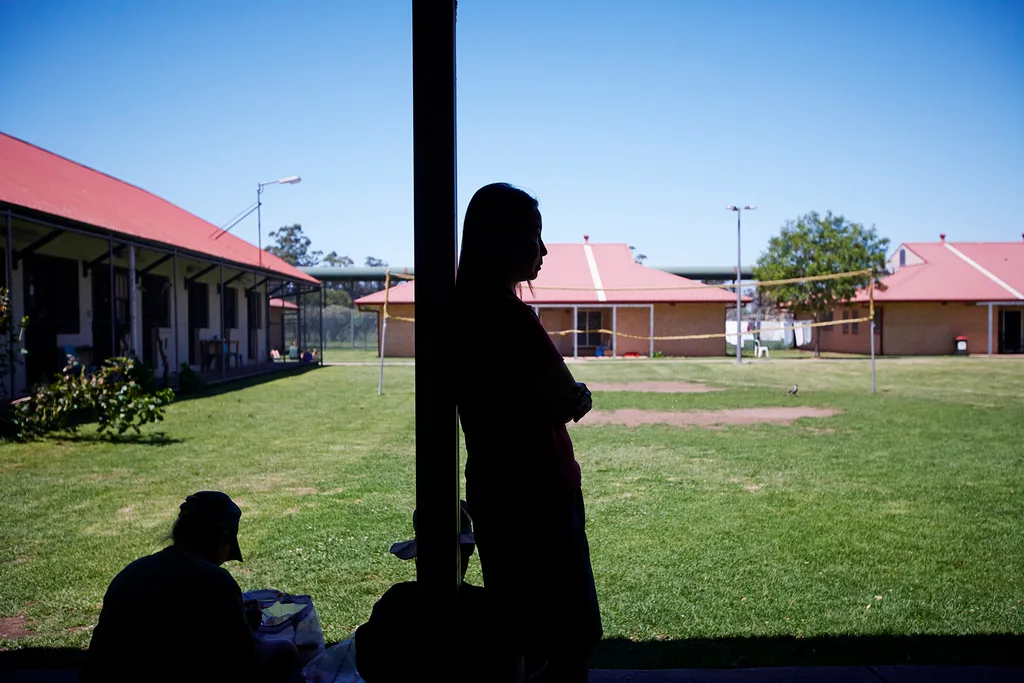
Josephine, who was dux of her school before going off the rails, has a pensive moment at Emu Plains Correctional Centre. PHOTO: Nick Cubbin.
Prison correctional officers will tell you that women serving time are very different from their male counterparts. In a men’s prison, you need to watch your back. Things can turn violent quickly. In a female facility, on the other hand, you’re more likely to get caught up trying to resolve complex emotional disputes and relationship breakdowns.
“Men are high risk and low need,” a correctional officer tells The Weekly with a wry smile, “Women, on the other hand, are low risk and high need.”
Illustrating this, it’s rare for women to try and escape (although a planned old-school attempt using knotted bed sheets was foiled by guards at Emu Plains, west of Sydney, 18 months ago).
Similarly, they’re much less likely to be violent or start riots than their male counterparts. That’s not to say it doesn’t happen. Only a couple of months ago, two officers were taken to hospital after being attacked by a female inmate, who reportedly left one vomiting in distress after wrenching hair from her head. The attack sparked a lockdown at the Dame Phyllis Frost Centre at Ravenhall in Melbourne’s western suburbs.
In rehabilitation sessions, say staff, women prisoners are more forthcoming than men in talking about problems in their life. Maybe there’s more to talk about: the ripple effects of them being incarcerated tend to be more severe as they’re more likely to be primary carers to young children and the linchpins of households.
Male inmates, say prison staff, generally remain tight-lipped and prefer to spend their time working out at the gym – whereas the female facility lies empty and virtually unused. Perhaps unsurprisingly, women are also more likely to spend their money on chocolate and confectionary (there’s a “buy up” system in which inmates can order discretionary goods).
“Women often come in like that,” observes Patrick Aboud with a smile, holding up his pinkie finger to illustrate their thinness, “And come out overweight or obese. But we encourage them to take care of their health and appearance. The men tend to spend buy-ups on tuna or protein supplements, train at the gym and come out looking fit and lean.”
Bans on tobacco – the mainstay of “buy-ups” and a habit for a whopping 84 per cent of inmates – are being rolled out across most states and territories, sparking unrest and disruption from aggrieved smokers. Demand for nicotine patches is expected to be high.
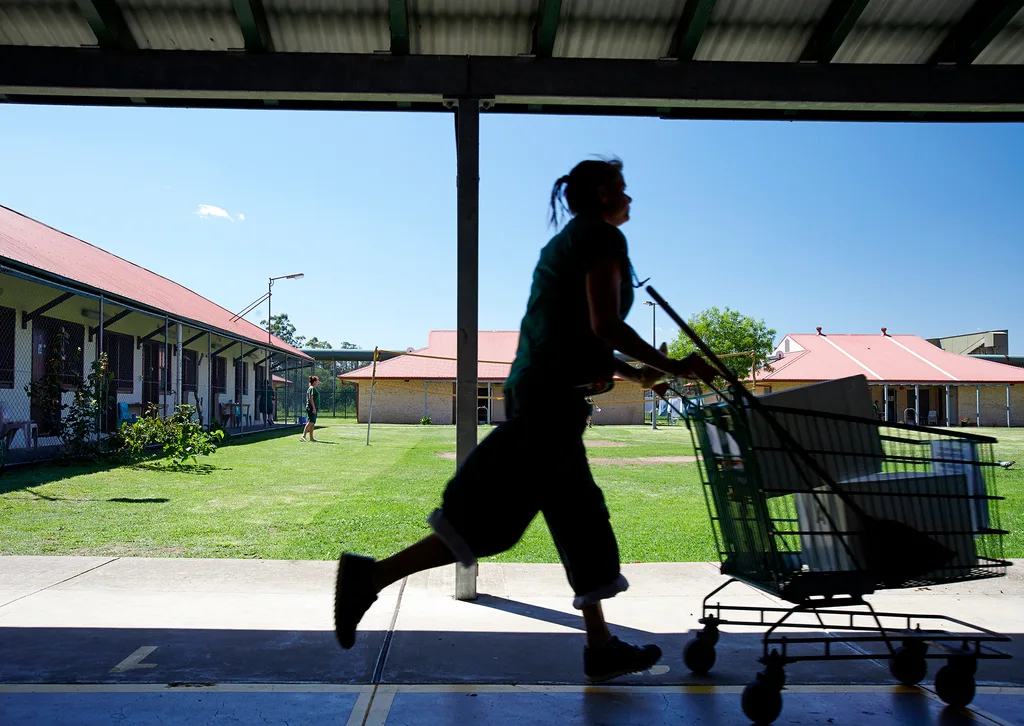
An inmate runs by with a trolley Emu Plains Correctional Centre. PHOTO: Nick Cubbin.
Silverwater Women’s Correctional Centre is well-known as a high-security jail. This is where women who have committed the most serious offences go. Among current inmates are convicted child killer Kathleen Folbigg and accused murder Harriet Wran (daughter of ex-Premier Neville Wran). Not that high-profile names get any special treatment, says Patrick Aboud.
“They’re just like any other prisoners,” he says. “But they often feel safer here than on the street. And in jail, they’ve got status.”
A grey and ageing facility, Silverwater is surrounded by a forbidding high-security fence. Photographer Nick Cubbin and I undergo fingerprint, retina and security scans before entering the prison on a cold and wet Wednesday late last year. We’re not permitted to bring our mobile phones, nor to photograph outer walls for security reasons.
Once inside, we take a tour of the CSI building (that stands for Corrective Services Industries – nothing to do with the TV crime show), where groups of women are sorting and reassembling headsets for airlines including Qantas, Air New Zealand and Emirates.
Bags of used headphones are delivered by truck each morning. Inmates sit at tables, sorting through the parts, removing earpads, unknotting wires and grouping them by model. We’re told the pay is 40c per bag of 50 completed headsets – which works out for most at a maximum of $4 a day. There’s a bit of rude banter among the inmates about earmuffs. Before we leave, one of them shouts across to us with a wide grin, “We’re professional muff divers – put that in your story!”
Aside from headset recalibration, the prison system is powered by a remarkably self-sufficient network of industries. In NSW, the inmates’ uniforms or “greens” are produced by inmates at Goulburn Correctional Centre (and then given an individual twist by their female wearers – think rolled-up hems, shiny tracksuits and accessories). Fresh bread comes from Long Bay, pies from Wellington, apples and beef from Mannus, sandwiches from Bathurst and vegetables from Muswellbrook. At Emu Plains, there’s a farm with 230 cows producing milk and dairy products. The fruit is rationed to prevent it being fermented and turned into alcohol. Correctional officers know the ingenuity of inmates with time on their hands shouldn’t be underestimated.
“A few years back,” recounts a security chief, “we had a smell of home brew wafting around but we couldn’t figure out where it came from. We were looking in the grounds where it seemed to be coming from. The only thing there was a stake with no plant attached. So we pulled it up and realised it was a straw connected to two 20 Litre containers of home brew. They [the inmates] weren’t very happy when we found it.”
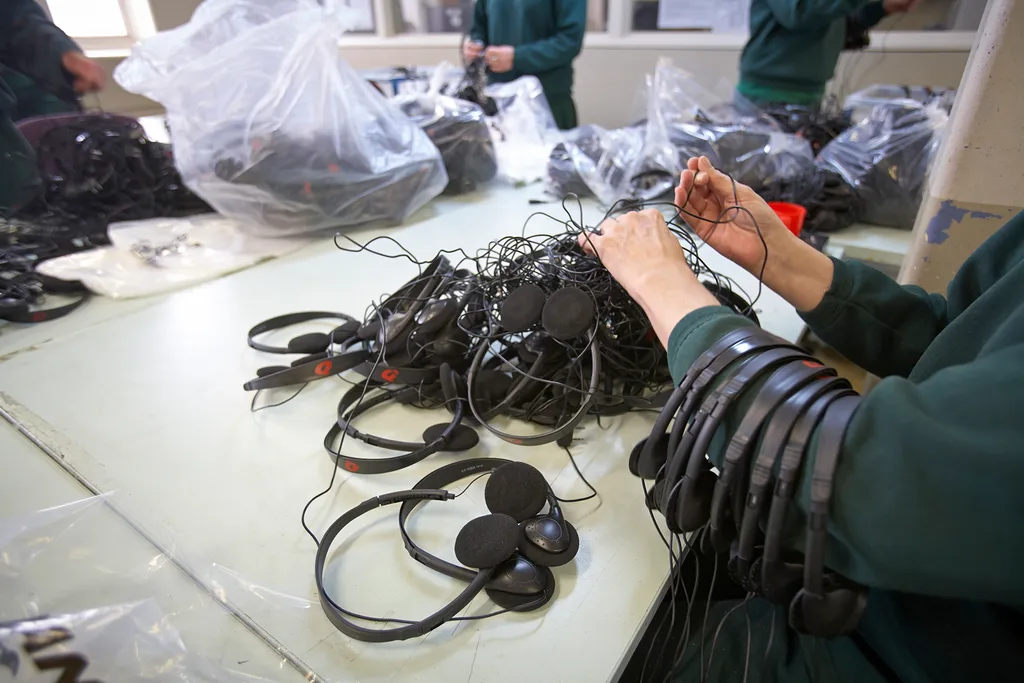
A worker sorts through airline headsets at Silverwater Women’s Correctional Centre. She’ll be paid 40c per bag of 50 completed headsets. PHOTO: Nick Cubbin.
At the other end of the spectrum is the low-security Emu Plains. Located at the foot of the Blue Mountains, about an hour west of Sydney’s CBD, this prison is green, rural and quiet. It’s here that some inmates are permitted to live with their babies and young children.
Some argue that jail is no place for a baby but Jacaranda Cottage seems a pleasant oasis nonetheless. About 20 infants and children aged up to 12 live with – or have overnight stays on weekends and in school holidays with – their mothers here in a cluster of cottages around a large lawn with a playground. The outer perimeter resembles a pool fence.
It’s here we meet softly-spoken Keisha, 22, and her baby son Jack*. She only discovered she was pregnant during a routine test on admission to prison as a first-time drug offender and considers herself lucky to have been accepted onto the mothers and children’s program.
“My life’s good at Jacaranda,” she says, “because I have been able to bond with my newborn son.”
Keisha says she’s benefited from the prison’s parenting programs and facilities, as well as drug rehabilitation. She gave birth under guard at a nearby public hospital.
Nevertheless, Keisha wouldn’t choose to be here. Her every move is supervised by government departments, she points out, she’s a long way from her family in far western NSW and she doesn’t have any meaningful autonomy. Phone calls, made from old-school prison pay phones, are monitored.
Other low-risk prisoners reside at Emu Plains too. Down at the dairy, inmates get up early and don their gumboots to milk the cows and process the milk into cartons for distribution across the prison network.
Open-faced Josephine, 40, who works as a sweeper and was convicted of conspiracy to supply drugs, grew up in a strict Asian family and was dux of her school.
“I got sick and tired of studying,” she says, “and I met the wrong people.”
However, while serving a previous seven year sentence, she gained a Masters degree in psychology.
“You would think people would run away from here because the security is low,” she says. “But once you have that privilege you don’t want to lose it.”

Young mum Keisha hugs her baby son Jack. They live together while she’s serving time under a mothers and children’s program at Emu Plains Correctional Centre. PHOTO: Nick Cubbin.
The growing number of women being sent to jail isn’t the only big change since the 1970s and 1980s. Conditions inside have changed greatly too.
“Jail has changed that much since I first went in,” says Allison, who estimates she’s served about nine years in total with six months as the longest stint. “It used to be really hard. It’s more like high school now.”
Inmates’ seniority can be measured by their personal identification numbers – known as master index numbers [MINs] – with those starting with a “1” meaning they were first admitted at least 30 years ago.
“These prisoners don’t appreciate modern prisoners,” says Patrick Aboud. “They came in before reforms and are hardened. They knew where they stood with each other. The younger ones don’t care – they’re more casual about doing time.”
Health is a major issue for many inmates, who receive treatment through a dedicated channel of the public health system. It goes beyond addiction, mental health, dental problems and chronic diseases like diabetes and heart disease.
As seen in the broader community, the prison population is ageing. At Silverwater Women’s, for example, inmates range in age from 18 to 70.
“Our prison population is becoming elderly, particularly the women,” reports Patrick Aboud. “It’s tough when they are older. You see age-related issues like dementia and mobility problems.”
Meanwhile, the rise of the drug “ice” is fuelling to the rise in crime committed by women, he says. “I work [at the mental health unit] with a lot of girls who are so sick from ice,” says Allison.
“I have tried [ice] in the past but it’s not for me because it hasn’t been around for long enough to know the damage it’s doing. It’s scary – and it’s everywhere now.
“I don’t know if the girls in the mental health unit are going to come back from it.”
Seeing the state of the women in this unit has been “a wake-up call” for Allison’s fellow inmate Dellah, 42, who tells The Weekly she regrets ever trying ice.
“I never touched drugs in my life,” she says. “But my 24-year-old daughter was taking ice so I decided to try it. I don’t remember any of it. I burned the house down.”
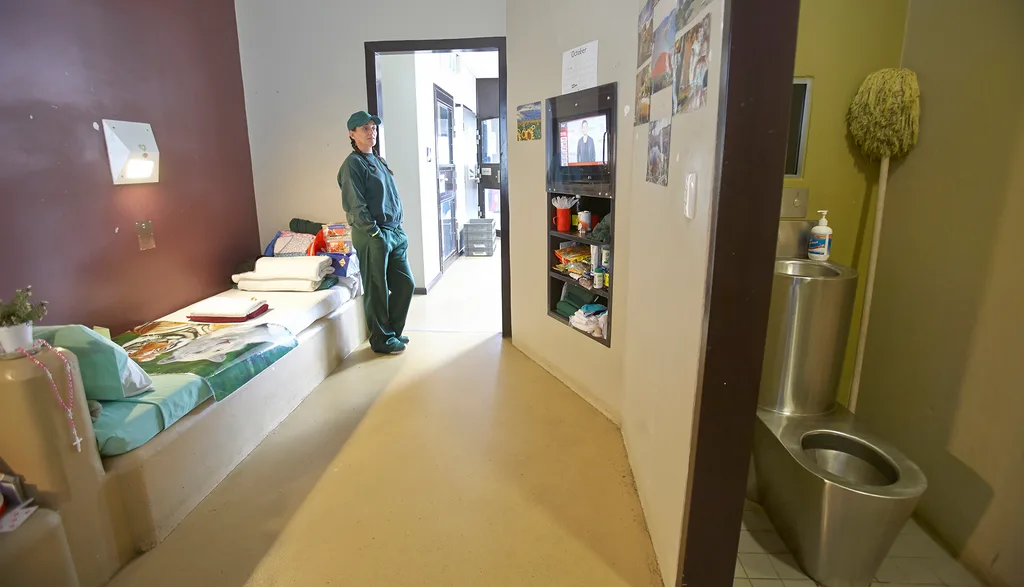
Inmate Allison in her cell. PHOTO: Nick Cubbin.
A new rehab program – the Yallul Kaliarna Drug and Alcohol Treatment Program – is being launched when The Weekly visits Dillwynia, a pleasant orange-bricked facility with sprawling lawns and surrounded by bushland. Then Attorney-General Brad Hazzard and Corrective Services NSW Commissioner Peter Severin are giving motivational talks to inmates about turning their lives around and making a fresh start.
“I don’t want to look in the mirror and hate the person staring back at me anymore,” says Emma, 35, who says she started taking heroin at 24 “to shut out the pain and noise in my head” after her boyfriend died in a motorbike accident and was convicted for supplying drugs.
“I can see where my life is leading me. I don’t want to be coming in and out of jail anymore. I want to get out and help people like myself.”
Many of these inmates are on a methadone program as they go through rehabilitation. Nevertheless, prison staff are on constant alert for drugs, which do get into the hands of inmates via visitors. They may be passed via hand or mouth. A deterrent, however, is strip searches for all inmates whenever someone is caught.
“It happens quite often,” says Silverwater’s Allison. “One does it and we all suffer.”
In another case of criminal ingenuity, a staffer tells The Weekly, inmates have been caught retrieving drugs that had been thrown over the outer fence encased in tennis balls and sewn up in dead birds at Wellington prison in central NSW.
“The low-security inmates were picking them up and passing them onto medium-security inmates for distribution,” he says.

A correctional officer has a quiet word to an inmate undergoing a new drug and alcohol rehabilitation program at Dillwynia Correctional Centre. PHOTO: Nick Cubbin.
Being locked up causes far more shame and stigma for women than it does for men, says Deidre Hyslop, then principle advisor to women offenders for Corrective Services NSW.
“One of the biggest issues is rejection from family and community,” she says. “I think it’s because they’ve committed a criminal offence – but then also an additional offence against society’s views of what being a woman is.”
This double standard is especially poignant during visiting hours.
“The men get huge support from family,” says Deirdre Hyslop.
“[At Long Bay prison] there would be trails of women coming to visit: partners, mums, aunties and children. But the women inmates don’t get the same thing. More often, it’s friends they met in custody coming back to visit them.”
Boyfriends, husbands and partners don’t tend to hang around for long, note prison staff.
Life doesn’t necessarily get any easier when women are released either. Accommodation is the biggest issue, says Karon Meehan, acting manager of services and programs at Silverwater Women’s.
“Unless they have got support outside in the community, they often have got nowhere to sleep. And it can be very hard for them to get housing.”
Finding and keeping a job with a stint in jail on your CV isn’t easy either.
“I’ve heard stories of women who’d been doing really well,” says Deirdre Hyslop, “then someone finds out [they’ve spent time in prison] and word gets out. Then they lose their job, go back to crime and fall apart.”
Meanwhile, for prison staff, says Patrick Aboud, there’s little public recognition yet morale and camaraderie are strong.
“No-one wants to hear about prisons,” he says. “There’s a ‘lock them up and throw away the key’ attitude. Yet there are a lot of dedicated staff who go above and beyond the call of duty. Their role is to maintain order but we have some guards who bathe and shower the mentally ill. We also have a laugh, we get along with the inmates. Everyone is a human being at the end of the day.”
When The Weekly leaves Silverwater Women’s to return to the relative warmth and comfort of our car, an experienced officer gives us a nod and a parting word.
“You see the same faces coming in and out,” he tells us. “They’ll do their time and leave. Then it gets cold, they might be sleeping rough and life gets on top of them. At least in here they get a roof over their heads and three meals a day. And they’re not alone.”
And so the cycle continues.


